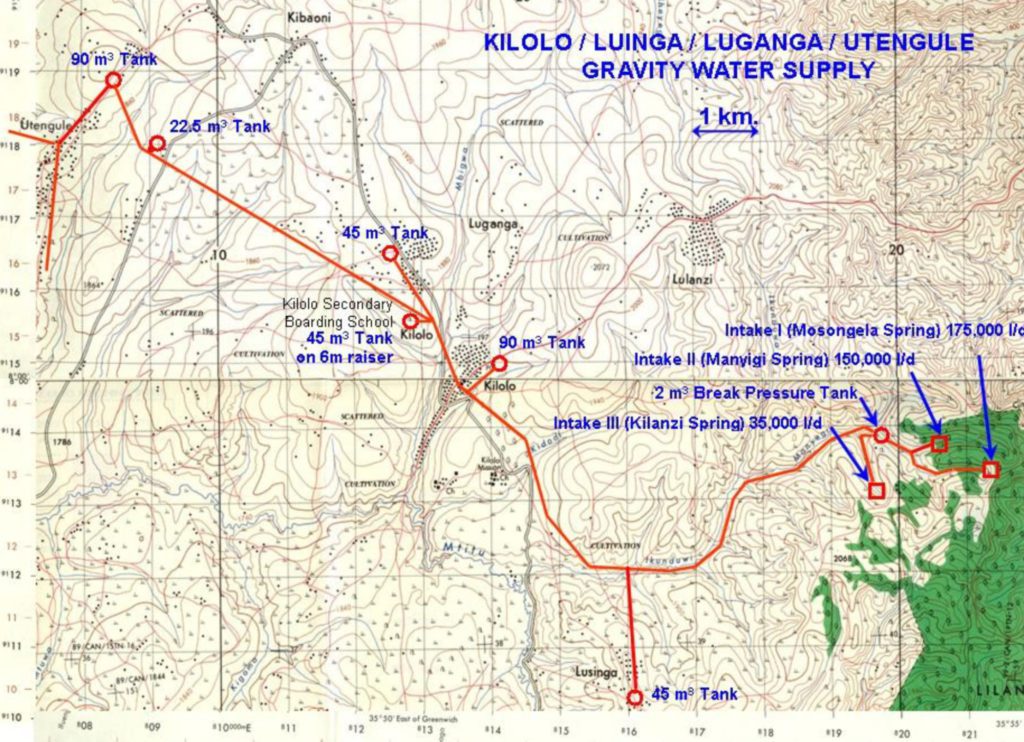Rainfall storage in Kikagatie, Uganda
The rainfall storage project at Kikagatie helped 2,500 settled agriculturalists with fairly large herds of cattle, in the south-west of Uganda, at a cost of £46,500.
Kikagatie is in a rural area in savannah-type landscape with gently rolling hills. There is one primary school with 400 children.

With 600-800 mm of rain per year, permanent shallow ground water is not available. There might be deep groundwater, but that would need expensive mechanical pumping, which the community could not sustainably afford.
So a “charco-cum-valley” tank was designed and built to store 52,000 cubic metres of rainfall (enough for the community’s needs for the whole year). A shallow well fed from the tank leads to a hand pump and cattle watering trough.
The programme also included improved sanitation measures, like concrete slabs to cover pit latrines that can be kept clean and covered. Health and hygiene education, conducted by the Diocesan Health workers and local Ministry of Health officers, formed an integral part of the project, as well as training in maintenance and book keeping.
Who benefitted from the scheme?
2,500 residents of Kakagatie, Kiruhuru District
Who did CED partner with?
Planning, Development and Rehabilitation Department (PDR), Church of Uganda
What did it cost and who paid for it?
| Meal-a-Day Committee | £15,000 |
| The States of Guernsey Overseas Aid Committee | £31,500 |
| Total | £46,500 |

